#My Man Godfrey 1936
Explore tagged Tumblr posts
Text

Movie Classic Magazine, September 1936.
#text#carole lombard#william powell#my man godfrey 1936#1930s#movie classic magazine#old hollywood#old magazines#old movies#old movie stars#classic hollywood#old hollywood actors#1930s cinema#1930s movies#30s movies#30s film
10 notes
·
View notes
Text










Out of context 1930s dialogue from Angels with Dirty Faces (1938); Dodsworth (1936); The Skin Game (1931); G-Men (1935); My Man Godfrey (1936); Things to Come (1936); The 39 Steps (1935); Easy Living (1937); Sabotage (1936); and The Awful Truth (1937)
#out of context#subtitles#1930s film#30s movies#angels with dirty faces#dodsworth#the skin game#g-men#my man godfrey#things to come#the 39 steps#easy living#sabotage 1936#the awful truth#dialogue#movie lines#b&w
31 notes
·
View notes
Text

Bugle -beaded evening ensemble
In 1936, Universal Studios released "My Man Godfrey", in which Carole Lombard was the leading actor. In the studio image shown here , Lombard is wearing a beaded gown designed by Travis Banton, and her iconic 152 Carat Star Sapphire Diamond Brooch
Photo kathleenlynagh com
Academy Museum of Motion Pictures, in Los Angeles.
#1936#1930s#30s#carole lombard#my man godfrey#travis banton#la#los angeles#academy museum of motion pictures#costumes#vintage fashion#fashion
17 notes
·
View notes
Text

MY MAN GODFREY (1936) fan poster made by me!
ANGELS WITH DIRTY FACES (1938) fan made poster by me!
this one can be found on tmdb too in case you wanna use it on letterboxd <3 (dm if you do). please don't re-upload it without my permission. :)
letterboxd user: nightofthunter
tmdb user: nevercvrsed
requests are always open!
#classic hollywood#classic#old films#old hollywood#old money#coquette#claudette colbert#william powell#my man godfrey#1936#1930s#fan made#fan poster#movies#films#movie poster#film poster#letterboxd
9 notes
·
View notes
Text
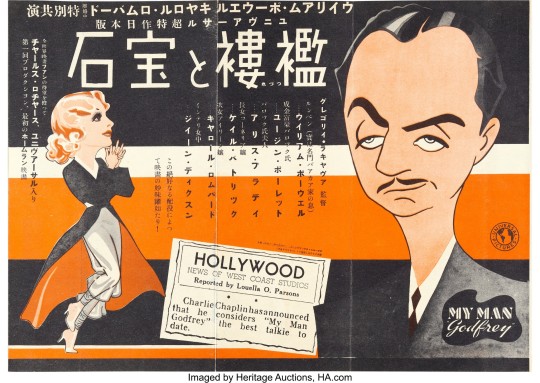
Vintage Poster - My Man Godfrey (Japanese)
Universal (1936)
#Posters#Film#My Man Godfrey#William Powell#Carole Lombard#Vintage#Art#Japan#Japanese#Universal#Universal Studios#Luella Parsons#1936#1930s#30s
167 notes
·
View notes
Text

My Man Godfrey - 1936.
#my man godfrey#the 30s#the 1930s#classic movies#classic film#1936#universal pictures#william powell#carole lombard#vintage illustration#vintage advertising#movie posters#movie stars#movies#vintage posters
22 notes
·
View notes
Text
thrilled that so many people like my Mom's Favorite Christmas Movies post. each like is like a tiny little pat in the head
#i was watching shop around the corner this afternoon actually and got a little sad bc. we always giggled about ochi chyornye#because of an entirely different movie (my man godfrey 1936)!!#and like. my brother has seen both of them and gets the joke but i was like. who's gonna giggle with me about ochi chyornye.#and i was like. i really wanna tell people about the movies she loved and we loved watching together and i want people to watch them!!#and i know lots of other people HAVE watched them!! tcm wouldnt hold film festivals and cruises for nothing!!!!!#and it makes me happy to see people interacting with my post. thank you 💖#she also loved the bishop's wife (1947) but it's not a fav of mine (even if monty woolley was also there) but i think she liked it a lot bc#of cary grant. and i dig that clearly i too have seen cary grant 💖#and it's a wonderful life but we also avoided watching it bc we'd both be crying like 5 seconds in. and lots of people have seen or at least#heard of that one.
5 notes
·
View notes
Text
Watched a funny movie from 1936 last night which spends a huge amount of its runtime skewering foolish rich people, but woke up still hearing one line over and over.
The father of the rich family, played by eyebrow artist and gravelly punchline man Eugene Pallette, says “I don’t mind giving the government 60% of what I make. But I can’t do it when my family spends 50%!”

I haven’t done the math to figure out if your total income tax could have hit 60% in 1936: the top tax rate (which would only apply to the money he made in excess of some large figure) seems to have been around 79%, so he would have to be making a LOT of money.
But somehow, regardless, just a rich character saying that offhandedly to set up the joke keeps playing on loop in my head. “I don’t mind giving the government 60% of what I make.” The government employing people to build bridges and paint murals and interview survivors of slavery for posterity. “I don’t mind giving the government 60% of what I make.” The feeble beginnings of a social safety net. The country crawling out of the Great Depression and some rich guy, even an imaginary one a movie studio could put up on a screen for people, not minding paying his share to the country where all his wealth was collected.
“I don’t mind giving the government 60% of what I make.”
#I’m haunted#my man godfrey#my man godfrey (1936)#marginal tax rate#what if rich people were insane but didn’t mind taxes#The New Deal#movie quotes#old movies
2 notes
·
View notes
Photo


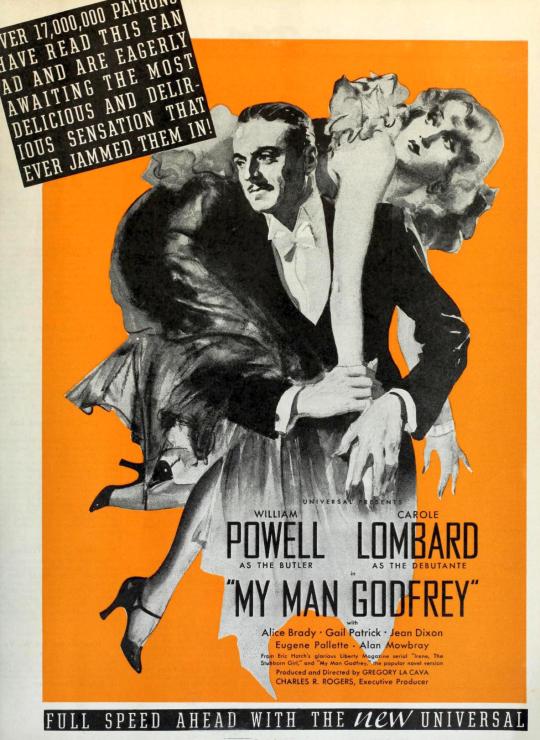

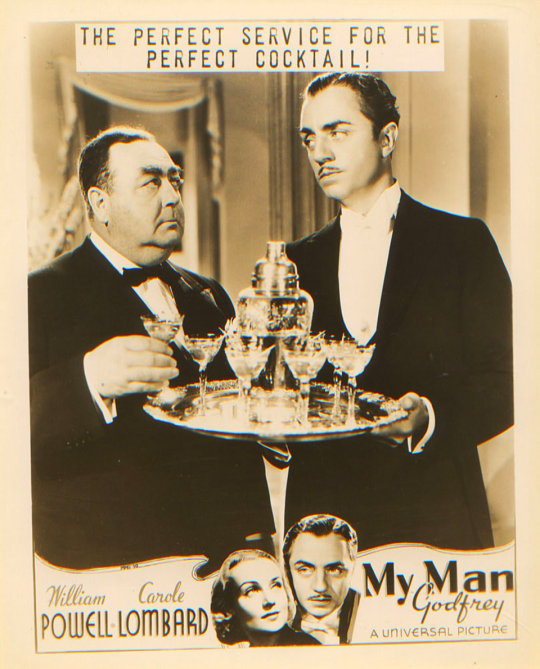

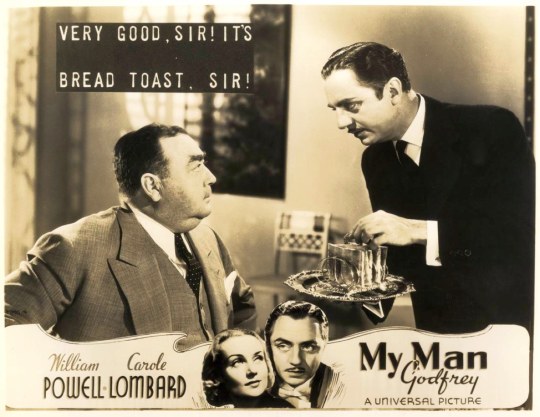
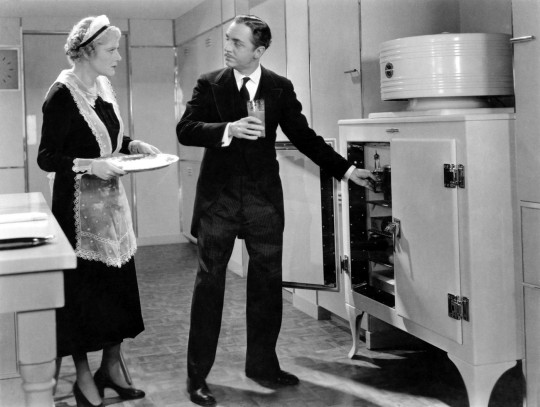
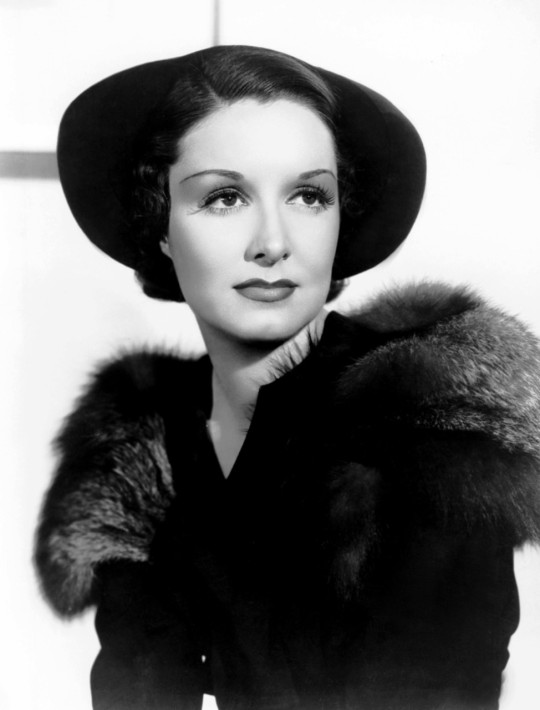
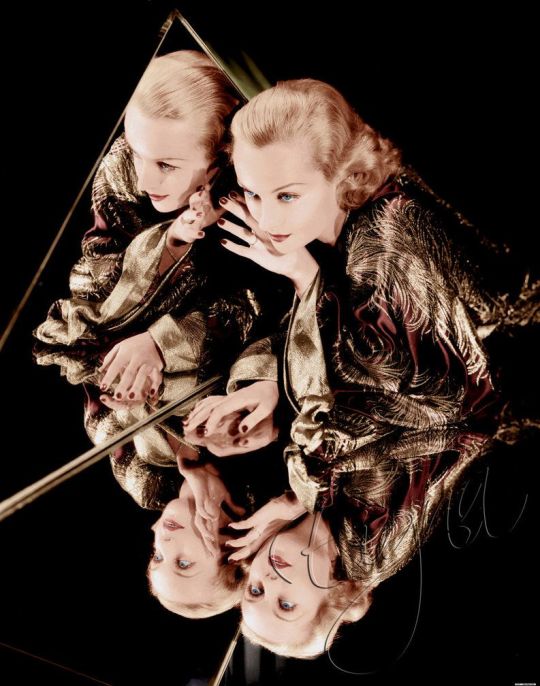
My Man Godfrey (1936) Gregory La Cava
February 8th 2023
#my man godfrey#1936#gregory la cava#william powell#carole lombard#alice brady#eugene pallette#gail patrick#mischa auer#jean dixon#alan mowbray#franklin pangborn#jane wyman
65 notes
·
View notes
Text

#my man godfrey#magazine gif#classic cinema#classic film#classic hollywood#old hollywood#old hollywood film#film stills#movie caps#1936#carole lombard
8 notes
·
View notes
Text
My Man Godfrey (1936)
#my man godfrey#1936#carole lombard#william powell#alice brady#gail patrick#mischa auer#robert light#gregory la cava#movie scenes#1930s film#30s movies#comedy#screwball comedy#video
21 notes
·
View notes
Text
guy that judges movies on the quality of their title sequences
#one of the silver dollar trilogy movies idr which one has a REALLY cool one#watching my man godfrey 1936 rn and i really dig the title#film
4 notes
·
View notes
Text

#movies#polls#my man godfrey#30s movies#old hollywood#gregory la cava#william powell#carole lombard#alice brady#gail patrick#eugene pallette#requested#have you seen this movie poll
75 notes
·
View notes
Text
THIS DAY IN GAY HISTORY
based on: The White Crane Institute's 'Gay Wisdom', Gay Birthdays, Gay For Today, Famous GLBT, glbt-Gay Encylopedia, Today in Gay History, Wikipedia, and more … January 23



1893 – Professional "sissy" actor Franklin Pangborn was born in Newark, New Jersey (d.1958). If you don't know the name you've seen his work in old late late show movies. The character actor appeared in dozens of comedies always playing prissy, fluttery clerks, bank tellers, assistant hotel managers, and department store floorwalkers. He appeared in many Preston Sturges movies as well as the W.C. Fields films "International House," "The Bank Dick," and "Never Give a Sucker an Even Break." Pangborn was an effective foil for many major comedians, including Fields, Harold Lloyd, Olsen and Johnson, and The Ritz Brothers. He appeared regularly in comedies and musicals of the 1940s.
When movie roles became scarce, he worked in television. For a time Pangborn was the announcer on Jack Paar's Tonight Show.
In his book "Screened Out: Playing Gay in Hollywood from Edison to Stonewall", the film scholar Richard Barrios wrote that some people "will praise the artistry of Pangborn as they bemoan its misuse, while others will prefer to revel in both the subversiveness of it all and the actor's skill. Still others will just shut the whole matter out and deny that there were any Gay characters in film prior to the late 1960s."
In his essay, "Laughing Hysterically: Sex, Repression, and American Film Comedy," the scholar Ed Sikov argues that: Pangborn probably appeared "in more screwball comedies than any other actor — "My Man Godfrey", "Easy Living", "Bluebeard's Eighth Wife", "A Girl, a Guy and a Gob", "The Palm Beach Story", "Vivacious Lady", "Mr. Deeds Goes to Town", "Design for Living", "Joy of Living", "Topper Takes a Trip", and "Fifth Avenue Girl" — probably because his character (the fussy, flustered, silly, and temperamental proto-Gay male) fits perfectly into screwball's world of urban extremism. A deft comedian, Pangborn elevated effeminacy into an art form. He makes himself an object of mockery in film after film, but he never gives up his dignity."
Pangborn died on July 20, 1958 after undergoing surgery. For his contributions to motion pictures, Pangborn has a star on the Hollywood Walk of Fame at 1500 Vine Street.


1898 – American motion picture actor Randolph Scott was born. (d.1987) He was known for his roles in films as diverse as Follow the Fleet; The Last of the Mohicans; High, Wide, and Handsome and Rebecca of Sunnybrook Farm.
In his earlier Westerns ... the Scott persona is debonair, easy-going, graceful, though with the necessary hint of steel. As he matures into his fifties his roles change. Increasingly Scott becomes the man who has seen it all, who has suffered pain, loss, and hardship, and who has now achieved a stoic calm.
Following the making of Ride the High Country (1962), Scott retired from film making at the age of 64. Having made shrewd investments throughout his life, he eventually accumulated a fortune worth a reputed US$100 million.
Scott married twice. The first time, in 1936, he became the second husband of heiress Marion Du Pont. Reputedly the couple spent little time together and the marriage ended in divorce three years later.
In 1944, Scott married Patricia Stillman, with whom he adopted two children. The marriage lasted 43 years until Scott's death in 1987.
Although Scott achieved fame as a motion picture actor, he managed to keep a fairly low profile with his private life. And therein lies the food for the rumors. Off screen he became good friends with Fred Astaire and Cary Grant. He met Grant on the set of Hot Saturday and shortly afterwards they began rooming together in a beach house in Malibu that became known as "Bachelor Hall." They would live together, on and off, for about ten years, presumably because they liked each other's company and wanted to save on living expenses. As Scott shared "Bachelor Hall" with Cary Grant for twelve years, it was rumored that the two actors were romantically involved, and that the name "Bachelor Hall" and the reported parade of women there were invented by the studio who wanted to keep their valuable actors away from any public scandal.

Randolph Scott & Cary Grant
In his book, "Cary Grant: Grant's Secret Sixth Marriage," author Marc Eliot claims Grant had a sexual relationship with Scott after they met on the set of Hot Saturday (1932). In his book, Hollywood Gay, Boze Hadleigh, author of numerous books purporting to reveal the sexual orientation of celebrities, makes various claims for Scott's homosexuality. He cites Gay director George Cukor who said about the homosexual relationship between the two: "Oh, Cary won't talk about it. At most, he'll say they did some wonderful pictures together. But Randolph will admit it - to a friend."
According to William J. Mann's book, "Behind the Screen: How Gays and Lesbians Shaped Hollywood, 1910-1969," photographer Jerome Zerbe spent "three Gay months" in the movie colony taking many photographs of Grant and Scott, "attesting to their involvement in the Gay scene." In 1995, Richard Blackwell published his autobiography "From Rags to Bitches," where he declared he was lovers to both Cary Grant and Scott.


1959 – Scott Thorson, born in La Crosse, Wisconsin, is an American best known for his relationship with and lawsuit against the entertainer Liberace.
A teenaged Thorson met Liberace in 1976 through his romantic friendship with dancer Bob Street (a friend of Hollywood producer Ray Arnett) who was staging Liberace's shows in Vegas. When Thorson was 18, Liberace hired him to act as his personal friend and companion, a position that allegedly included a five-year romantic relationship with lavish gifts, travel, and Liberace's promises that he would adopt and care for Thorson. Liberace claimed that he had "more mink coats and diamonds than Elizabeth Taylor". Liberace also incorporated Thorson into his Las Vegas stage performances – for example, Thorson drove Liberace's Rolls-Royce onstage, and was a dancer.
According to Thorson, their committed relationship ended because of Liberace's promiscuous behavior and Thorson's drug addiction. Thorson also claimed that it was Liberace that originally started him on the drugs, but then when his habit got out of control, Liberace cut him off from all of his credit cards. Thorson stated that following his plastic surgery, the surgeon provided for him a cocktail of highly addictive drugs that included cocaine, Quaaludes, biphetamines, and Demerol. Thorson stated that since he was so young at the time of meeting Liberace, he would do anything that he could to please him, including getting plastic surgery so that he could resemble him, but he felt that their relationship was one-sided. He called Liberace both generous and possessive.
In 2000, Thorson was among several people featured in the British television documentary Liberace: Too Much of a Good Thing Is Wonderful. In 2002, Thorson was interviewed by Larry King on Larry King Live, during which Thorson confirmed that, in the midst of his relationship with Liberace, he chose to have plastic surgery to look more like Liberace at the pianist's suggestion. Also during the interview with King, Thorson revealed his chin implant had been removed earlier in 2002.
In 1982, after he was let go by Liberace, Thorson filed a $113 million lawsuit against Liberace, part of which was a palimony suit. This was the first same-sex palimony case filed in U.S. history. Thorson decided to sue because he claimed that Liberace threw him out on the streets with nothing. Liberace continued to deny that he was homosexual, and during court depositions in 1984, he insisted that Thorson was never his lover. Throughout their lawsuit, Thorson stated that Liberace referred to him in the media as a disgruntled employee, a liar, a gold digger, and claimed that there was never a sexual relationship between them.
The case was settled out of court in 1986, with Thorson receiving a $75,000 cash settlement, plus three cars and three pet dogs worth another $20,000. Thorson visited and reconciled with Liberace shortly before the entertainer's death in February 1987. Thorson said, after Liberace had died, that he settled because he knew that Liberace was dying, and that Thorson had intended to sue based on conversion of property rather than palimony.
A year after Liberace's death, Thorson published a book about their relationship, Behind the Candelabra: My Life with Liberace. Thorson's book was later adapted by Richard LaGravenese and Steven Soderbergh into the 2013 film Behind the Candelabra, in which Thorson was played by Matt Damon opposite Michael Douglas as Liberace.
In 1989, Thorson emerged as a pivotal witness in the prosecution of gangster Eddie Nash, in the 1981 quadruple murders of the Wonderland Gang. For his testimony, he was placed in the federal witness protection program. In 1990, he was shot five times when drug dealers broke into his hotel room in Jacksonville, Florida.
In 2008, Thorson pleaded guilty to felony drug and burglary charges and was sentenced to four years in prison.
Previously diagnosed with hepatitis C, in the autumn of 2012, Thorson was diagnosed with stage II cancer. Since his diagnosis, Thorson has made public pleas for money to continue his medical treatments. Thorson had planned in 2012 to re-release the book Behind the Candelabra to coincide with the film's release.
In February 2013, police investigating a lost wallet tracked the use of the victim's credit cards to a hotel in Reno, Nevada. Thorson was found to be using the credit cards and was arrested. Thorson (who also uses the alias Jess Marlow, an alias he says that he acquired when he entered the protection program in the Nash case) was booked on a variety of charges, including burglary and using a credit card without consent. He pleaded guilty and was sentenced to five years' probation in July 2013.
Thorson did not do well on probation. In September 2013, he tested positive for methamphetamine, but was given another chance. He subsequently failed drug tests again – twice in October, and again on November 1, 2013. He was arrested on November 19, 2013, after violating a court order to enter an inpatient treatment facility in Reno two weeks earlier. On January 23, 2014, his probation was revoked and he was sentenced to 8 to 20 years in Nevada prison. Thorson is currently incarcerated in Northern Nevada Correctional Center in Carson City.

2009 – If you think persecution of gays in the United States was "way back then" consider this item:
The Washington Post reported that the Maryland state police considered the LGBT activism group Equality Maryland to be terrorists. Equality Maryland, the state's largest Gay rights group, was among the peaceful protest groups to be classified as terrorists in a Maryland State Police database. The group was designated a "security threat" by the Homeland Security and Intelligence Division, which also kept dossiers on dozens of activists and at least a dozen groups. Police kept files on Equality Maryland's plans to hold rallies outside the State House in Annapolis to press for legislation reversing the state's ban on same-sex marriage. Police planned to purge the files before word of their existence became public.
However, the files were revealed at a news conference, where a dozen Democratic lawmakers announced plans to introduce legislation to prevent future surveillance of nonviolent groups. Police would need "reasonable articulated suspicion of actual criminal activity" before they could conduct surveillance, the legislation's sponsors said. Gov. Martin O'Malley also planned to call for a similar bill. The measure also would prevent police from keeping files on citizens, unless the information is part of "a legitimate criminal investigation."


28 notes
·
View notes
Text
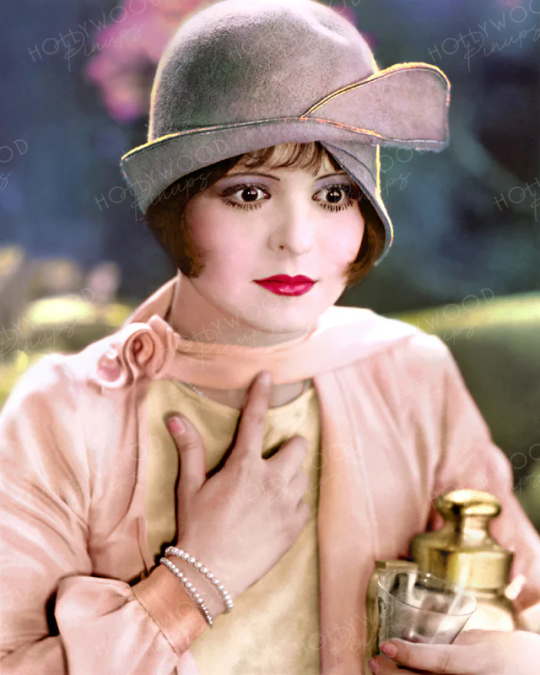
Century-Old Clara Bow Silent Film Believed Lost Forever Found
Long-Lost Clara Bow Silent Film Found in a Omaha Parking Lot.
The Pill Pounder, one of the key titles in the CV of the iconic flapper, has enjoyed a belated revival at the San Francisco Silent film festival
A century after she first began to turn heads, Clara Bow is “It” once more. The iconic flapper of the silent film era inspired Margot Robbie’s character Nellie in Damien Chazelle’s Hollywood epic Babylon, is namechecked on Taylor Swift’s forthcoming album The Tortured Poets Department, and yesterday at the San Francisco Silent film festival, one of her earliest films was shown for the first time since the days of bathtub gin.
The story of the film’s discovery has already caused excitement online. Film-maker Gary Huggins inadvertently snapped up a slice of lost silent film history at an auction in a car park in Omaha, Nebraska, that was selling old stock from a distribution company called Modern Sound Pictures. Hoping to bid on a copy of the 1926 comedy Eve’s Leaves that he had spotted on top of a pile, Huggins was informed that he could only buy the whole pallet of movies, not individual cans. The upside? The lot was his for only $20.
Huggins soon discovered that his new pile of reels included 1923’s The Pill Pounder, a silent comedy that had been thought to be lost for decades. It is a short, two-reel film, shot on Long Island, New York, and directed by Gregory La Cava, best known for later classics such as My Man Godfrey (1936) and Stage Door (1937). The film stars rubber-faced vaudeville veteran Charlie Murray, the so-called “Irish comedian” who was actually from Laurel, Indiana. He plays a hapless pharmacist, the “pill pounder” of the title, who is trying to host a clandestine poker game in the back room of his drugstore. What few realised until Huggins watched the film, was that it also features 17-year-old Bow in a supporting role. She plays the girlfriend of Murray’s son, played by James Turfler, who had already appeared with Bow in her second film Down to the Sea in Ships, directed by Elmer Clifton and screened in 1922. Turfler’s character is the butt of some bizarre gags. At one point, he chugs a jug of effervescent “fomo seltzer” and Bow watches in horror as he floats up to the ceiling.
In this, one of her earliest surviving performances on film, Bow looks even younger than her years. Although she lacks the sleek Hollywood glamour she later acquired, she has the charisma to turn a thankless bit-part into something of a scene-stealer. The critics took note: based on the evidence of this film, the Exhibitors’ Trade Review described her as “perhaps the most promising of the younger actresses”. In his introduction to the film at San Francisco’s grand Palace of Fine Arts theatre, Bow’s biographer, the screenwriter David Stenn, speculated that the actor may have forgotten that she made the film, as she never talked about it. It was made during a traumatic period in her life, only a few weeks after her mother’s death following prolonged mental illness. He invited us to imagine how Bow might have felt appearing in a lighthearted slapstick comedy in such circumstances.


The film, which has been restored by the festival’s organisers and was screened with accompanying music from composer Wayne Barker, now looks remarkably good for its age. The festival’s senior film restorer, Kathy Rose O’Regan, said it was in great shape when they received it. She added: “We imagined it was screened maybe a few times, but there’s hardly any damage – a few scratches here and there, some dirt, but overall in pretty stellar condition.”
Now it has been freshened up and looks its best, but it is still incomplete, being in what Stenn called a “beta version”.
That’s because the copy Huggins found was not from the 1920s, but a 35mm print from the 1950s or 1960s of an edit of the film that was destined to become part of a 16mm compilation of old silent films with a comic voiceover poking fun at its archaic aspects. The intertitles have been removed and there are a few scenes and shots missing, too.
This process is deeply unflattering to old movies, but it has been responsible for preserving versions of silent films that would otherwise have been lost, including the Lois Weber melodrama Shoes from 1916. And the lack of titles are no barrier to following the film.
“For me, it is a pretty perfect 14-minutes of fun,” says O’Regan. “It would be nice to know what the titles were, but you can certainly get the gist without them.”
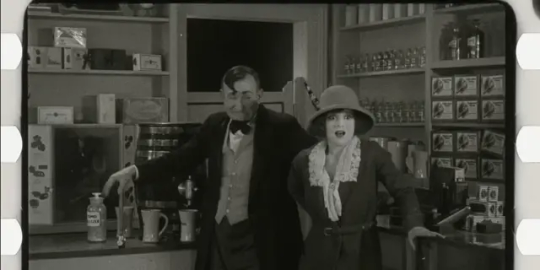
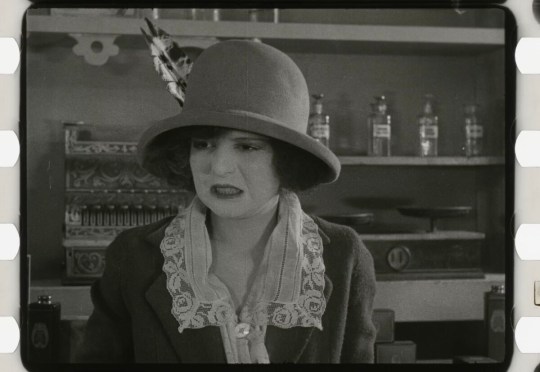
Stenn called the tale of the film’s discovery “miraculous” and led a round of applause for Huggins, who was in the audience. He explained that there was reason to believe that some of the discarded material was among the other cans that were sold at the Omaha auction. The hunt is on to round out The Pill Pounder, and several people have joined in the search, combing through thousands of reels. One Omaha-based film-maker and silent film enthusiast, Alexander Payne, was quick to offer his support.
The film fills in a brief blank period in Bow’s filmography. She shot the role – probably in just a couple of days – in the early “false start” phase of her film career. Bow, a tomboy from a troubled home in Brooklyn, made her debut after winning a magazine talent competition in 1921 but struggled to get her career off the ground.
“I wore myself out goin’ from studio t’studio, from agency t’agency, applyin’ for every possible part,” she later recalled. “But there was always something. I was too young, or too little, or too fat. Usually I was too fat.”
In 1923, she found her way into a handful of films, including The Pill Pounder, where she had the chance to shine in supporting roles, and this is when she finally got her ticket to Hollywood and Paramount.
“She’s not the star of the film, but you can’t take her eyes off her,” says O’Regan. “For the few minutes she’s there she’s divine, she’s fun, she’s full of energy.”
The festival screened The Pill Pounder alongside another new restoration. The feature film Dancing Mothers directed by Herbert Brenon in 1926, is a flapper drama that Bow made for Paramount, in one of her last supporting roles. She plays the reckless daughter of a lonely woman (Alice Joyce) who tires of staying home while her husband and daughter party hard in New York and steps out to go nightclubbing. Bow completely pulls focus from the grownups around her, playing a hedonistic minx, whose body spasms with pleasure when she sips a cocktail.
Stenn described the later film as “like watching a star being born”. Finally, Bow was able to make good on her early promise and start her career as a leading lady. With the breakout comedy It directed by Clarence Badger in 1927, she became a genuine star for the ages. It is easy to look back and assume Bow was destined to become a sensation, but her overnight stardom took a good five years of hard work. The Pill Pounder offers a fascinating glimpse into the route that she took to get there.
By Pamela Hutchinson.
#Clara Bow#The Pill Pounder 1923#Century-Old Clara Bow Silent Film Believed Lost Forever Found#Film-maker Gary Huggins#lost film#silent film#lost and found#flapper#the it girl#american actress#film star#silent film star#silent film era#1920s#1920s style#1920s cinema#1920s hollywood
24 notes
·
View notes
